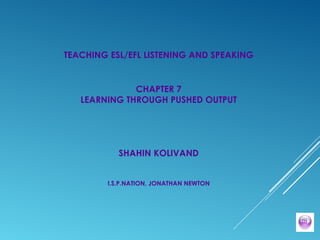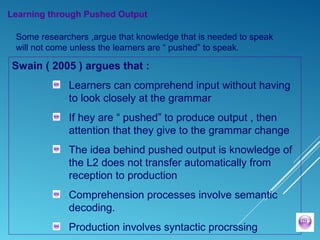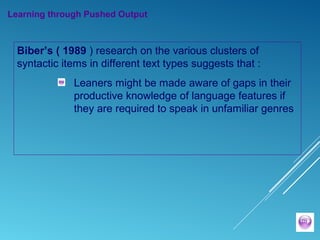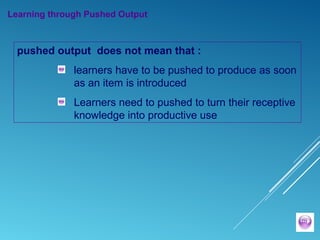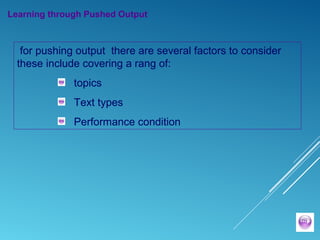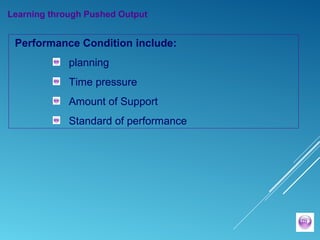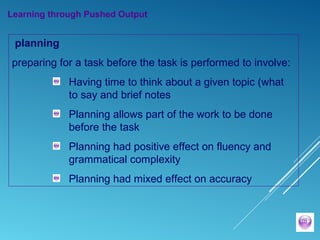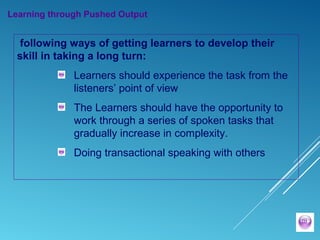This document discusses the concept of "pushed output" in second language acquisition. It argues that learners need to be pushed to produce spoken language in order to develop their productive skills. Pushed output involves encouraging learners to speak in unfamiliar areas through topics, text types, and performance conditions that push them out of their comfort zone. These could include less familiar genres, types of interaction, time pressures, or standards of performance. Planning, supportive listeners, and repeated tasks can help learners with pushed output. Different types of formal and informal speaking each have their own conventions that learners need experience with.
